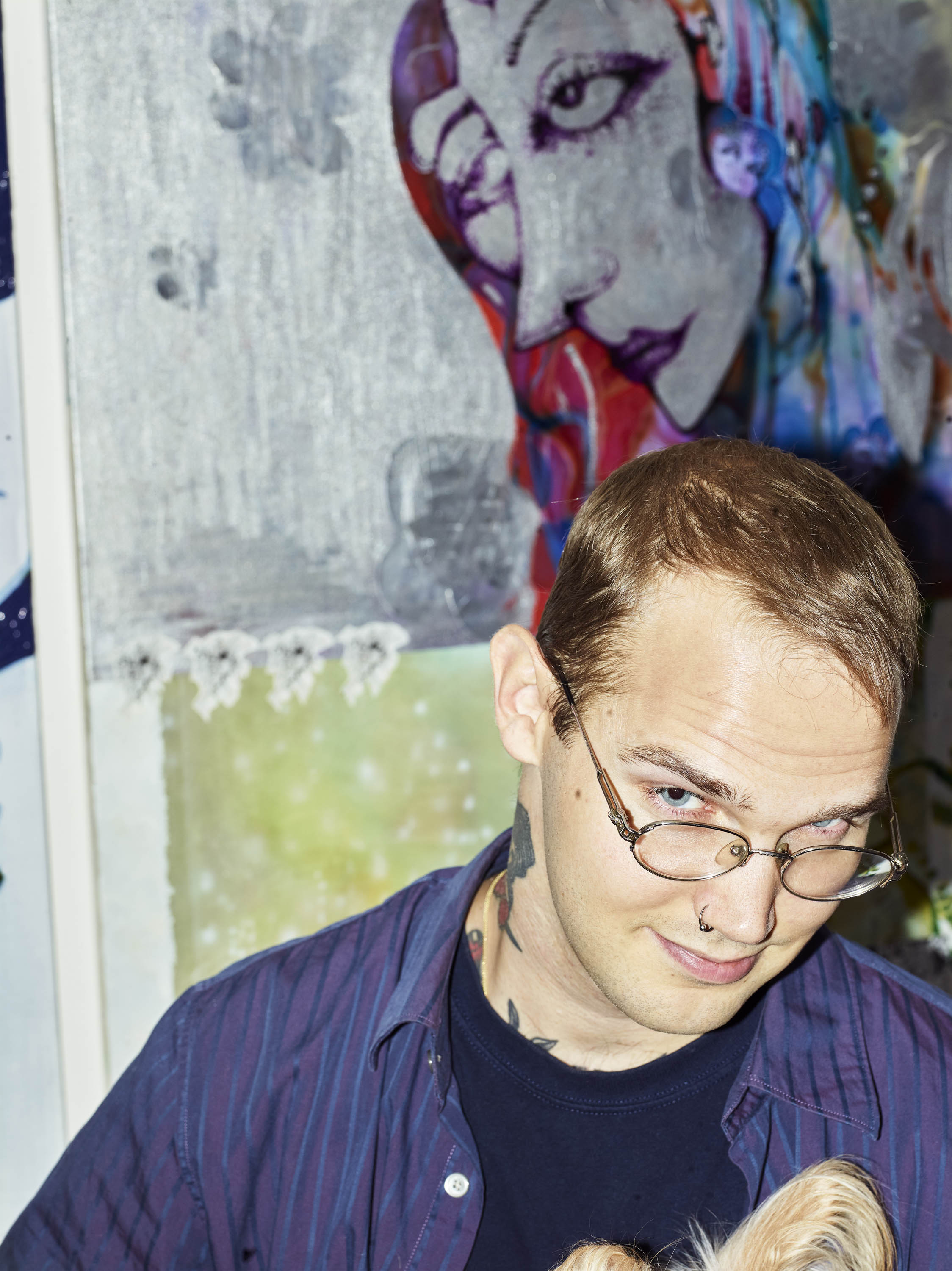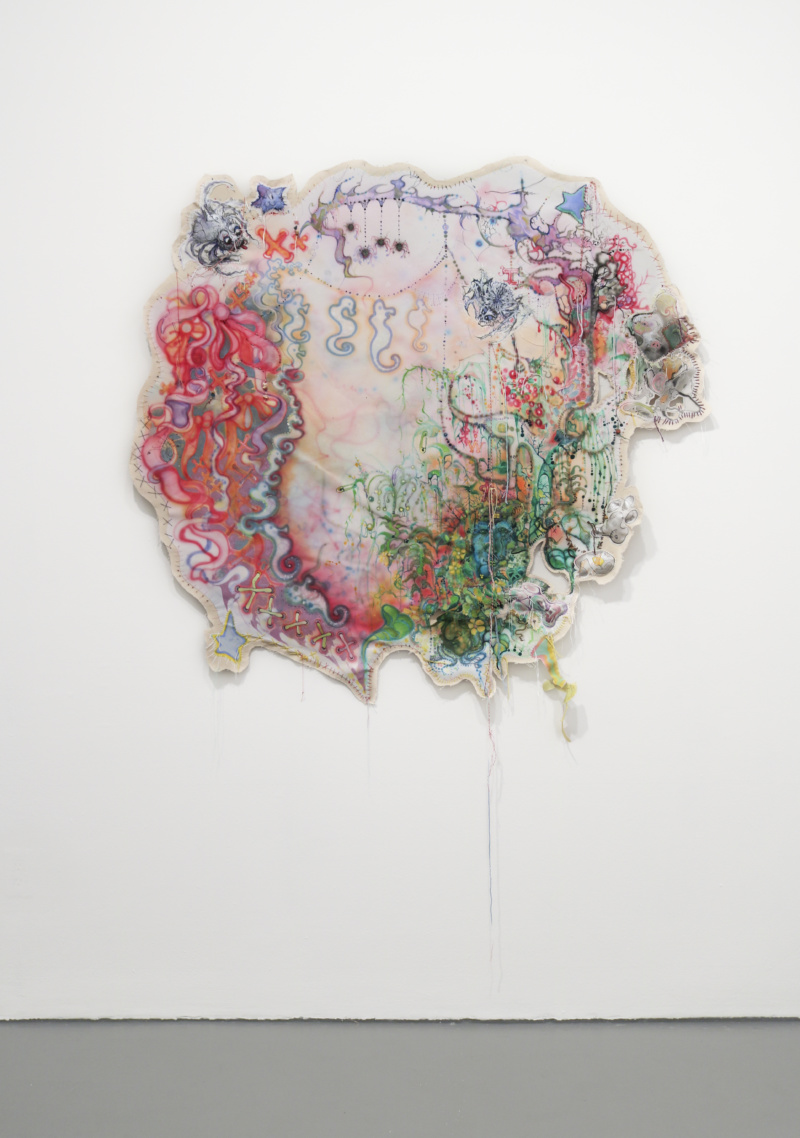
The work of tattooer, illustrator and painter Will Sheldon does nothing less than transport viewers to another realm—one of cacophonous psychedelia, a joyful pastel nightmare. “The way I think about my practice is all these elements floating around in the same world,” Sheldon explains. “The elements you see in my tattoos can translate to a college, or a painting or an illustration for a book.”
Sheldon is known to take relatable and accessible tropes like blood, flowers or body parts and filter them through his campy, unprecious lens: bones hung with cascades of loopy ribbon, sinister drippy eyes loaded with glamorous makeup and hardware that would more likely be on a purse than a machine. “When I think of a good tattoo or good imagery in general, I think of these simple things you learn in kindergarten, or what you find beautiful or interesting at that age,” he says from his East Village studio.

The combination of Sheldon’s deeply collaborative nature and experimental attitude has affected his aesthetic in whimsically surprising ways. “I really enjoy working with others,” he says. “You learn so much by putting ideas together and creating something completely unexpected.”
Previous collaborations include working with Raffaella Hanley, the visionary behind the Lou Dallas clothing line, where Sheldon’s designs have become part of runway looks. The artist also frequently works with Reba Maybury, illustrating the writer and dominatrix’s novella “Dining with Humpty Dumpty.” The two staged a show together in London last summer for which Sheldon crafted huge wallpaper-like canvases portraying the hybrid creatures that are often miniature in his tattoos. This wallpaper highlights a tension that propels Sheldon’s practice. “I think my art and my tattoo practice is fluid in some ways,” Sheldon explains, “but there’s something inherently different about putting something on a canvas and putting something on a body. There’s a distinction there for me that I’m always working through.”



